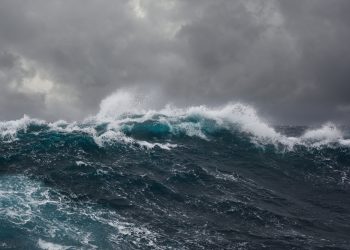The last two years MV Columbia records the ocean’s vitals every three minutes, along a 1,600-kilometer route through the Inside Passage. This includes the coastal region from Puget Sound to the Alaska Panhandle. The ship measures the sea’s temperature, salinity, dissolved oxygen content, and carbon dioxide concentration, aiming to monitor ocean acidification.
In remote nearshore regions, little data exists to indicate what is happening to coastal ecosystems, due to the fact that oceans are becoming more and more acidic. This data can prove to be very important, specifically for the Alaskan shellfish industry.
[smlsubform prepend=”GET THE SAFETY4SEA IN YOUR INBOX!” showname=false emailtxt=”” emailholder=”Enter your email address” showsubmit=true submittxt=”Submit” jsthanks=false thankyou=”Thank you for subscribing to our mailing list”]
As Allison Bidlack, director of the Alaska Coastal Rainforest Center at the University of Alaska Southeast, explains, acidification has damaged Washington’s shellfish growers in the past years. Namely, with oceans absorbing more carbon dioxide from the atmosphere, some coastal species experience significant impacts.
Specifically, when carbon dioxide dissolves into seawater, it limits the availability of calcium carbonate, which is the chemical needed by certain animals to create their shells. With the lack of easy access to carbonate, new organisms must spend more energy to put on shell. This can hurt their health, making them more susceptible to disease. It can also lead to damages in their growth.
The MV Columbia is collecting data since October 2017, however its work started years ago. While preparing for the operation, engineers equipped the ferry with a seawater line to tap water from the ocean. After that, they opened holes through the hull to retrofit the oceanographic equipment. Nevertheless, propeller and engine problems delayed the launch.
Despite the problems, the ship finally started its mission, with some surprising trends occurring. Namely, the amount of carbon dioxide in the water is less in some areas than was expected. This was mainly observed in areas where phytoplankton is growing, or where glacial meltwater flows into the sea.
On the other hand, higher concentrations of carbon dioxide were located in regions where deep ocean water wells up toward the surface. Because of a process known as buffering, the same change in carbon dioxide can have a whole different impact on the acidity of the water.
If is less buffered, then it is easier for anthropogenic carbon dioxide to limit the water’s pH, thus hurting sensitive shell-building organisms.
However, in spite of these significant findings, the project may be cut short. In September, the Alaska Marine Highway System will take the MV Columbia out of service for the winter, and replace it with a smaller vessel. The decision is indicative of budget cuts by Alaska to the state’s ferry system.
Nonetheless, MV Columbia could return to service this spring.






























































